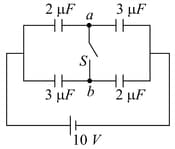A parallel plate capacitor of capacitance C is connected to a battery and is charged to a potential difference V.
Another capacitor of capacitance 2C is connected to another battery and is charged to potential difference 2V. The charging batteries are now disconnected and the capacitors are connected in parallel to each other in such a way that the positive terminal of one is connected to the negative terminal of the other. The final energy of the configuration is
Important Questions on Capacitance

A parallel plate capacitor having cross-sectional area and separation has air in between the plates. Now an insulating slab of the same area but the thickness, , is inserted between the plates as shown in figure having dielectric constant The ratio of new capacitance to its original capacitance will be,
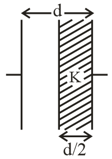
A parallel plate capacitor of two plates, each with area , is separated by air-gap. The capacitor is initially connected to source. When an unknown liquid is filled between the plates so as to fill the air-gap, an additional charge of is found to be flowing onto the capacitor from the source. The dielectric constant of the liquid is
(Assume )
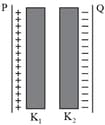
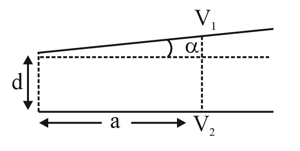
Four metallic plates each of area and separated from one another by a distance are arranged as shown in the figure. What is the capacitance between and
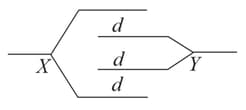
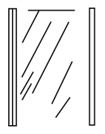
A parallel plate capacitor has plates of area A separated by distance between them. It is filled with a dielectric which has a dielectric constant that varies as where is the distance measured from one of the plates. If the total capacitance of the system is best given by the expression:
A parallel plate capacitor is made of two circular plates separated by a distance of 5 mm and with a dielectric of dielectric constant 2.2 between them. When the electric field in the dielectric is , the charge density of the positive plate will be close to :
In the figure is shown a system of four capacitors connected across a battery. The charge that will flow from switch S when it is closed is:
